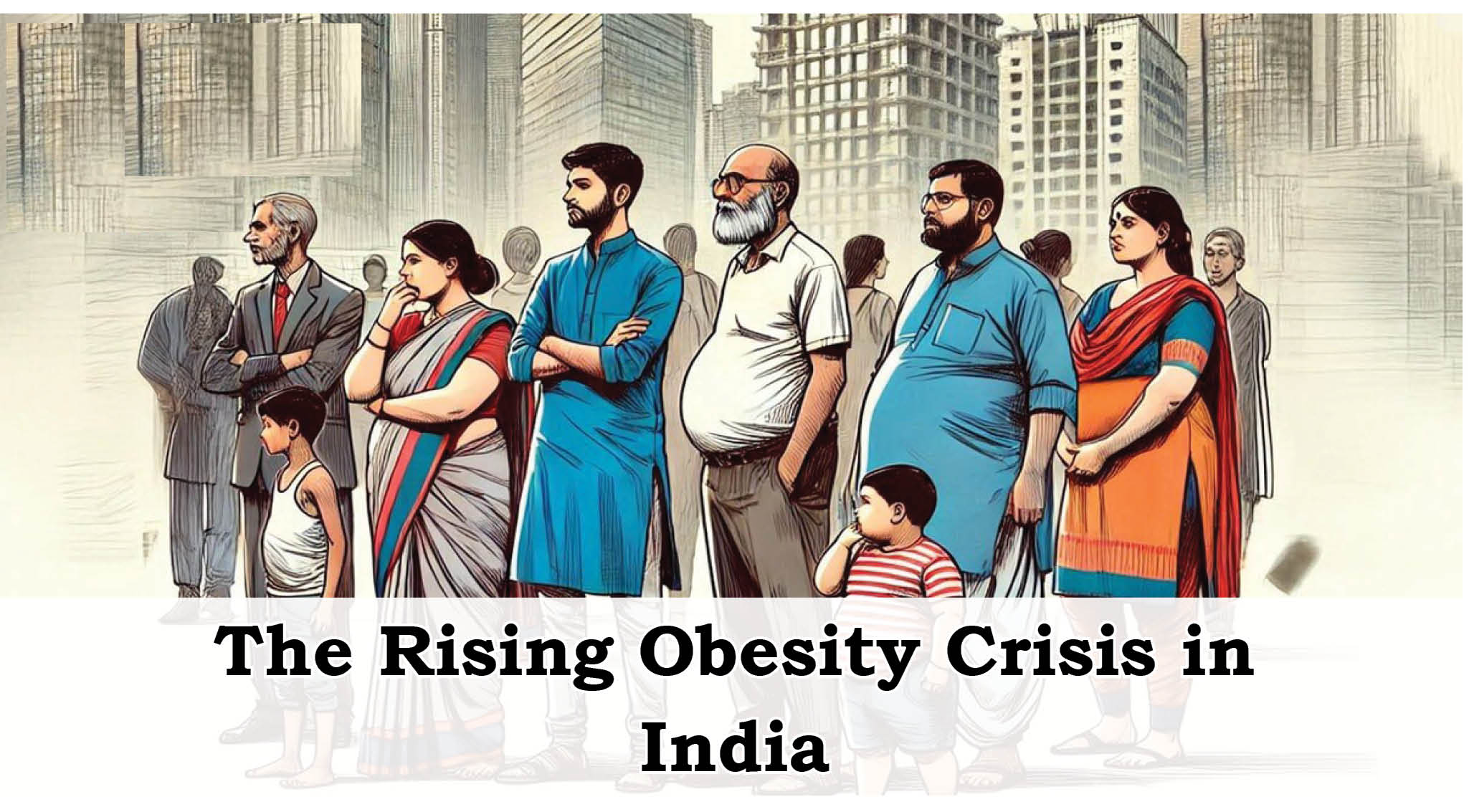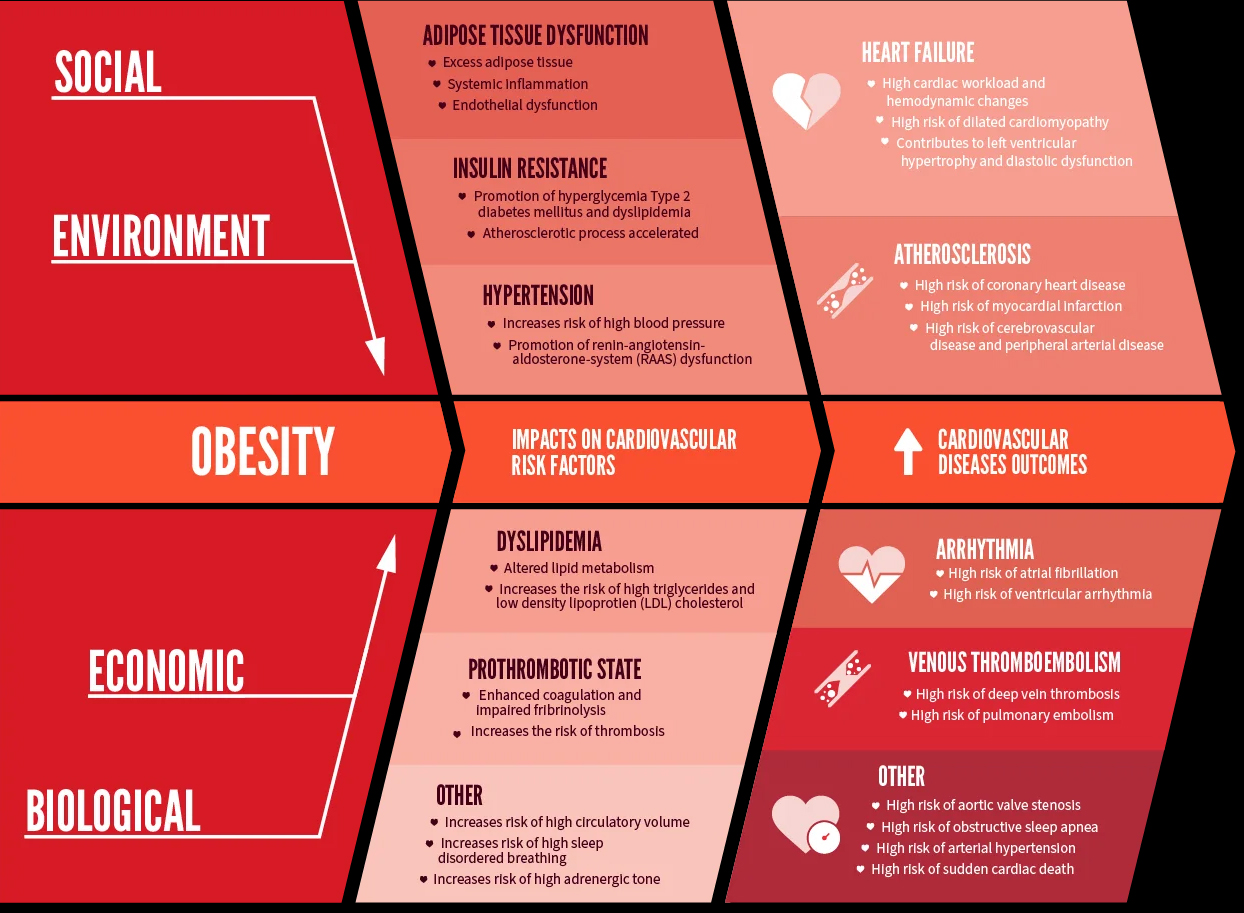Obesity in India has escalated alarmingly over the past three and a half decades, mirroring a global trend of increasing body mass across age groups. According to the World Heart Federation’s (WHF) World Heart Report 2025, obesity is no longer confined to wealthy nations or urban elites—it has permeated all socioeconomic strata the number of adults globally living with obesity has quadrupled since 1990. Yet, access to treatment and effective management tools remains severely limited, especially in countries like India. This article explores the prevalence, causes, measurement challenges, and health consequences of obesity, while highlighting treatment gaps and possible solutions.
A Global and National Surge:
In 2022, approximately 878 million adults globally were living with obesity, a steep rise from 194 million in 1990. If current trends continue, nearly two out of three adults over 25 could be overweight or obese by 2050.
In India, obesity among women has increased sevenfold between 1990 and 2024. Currently, about 44 million Indian women over the age of 20—roughly 10% of adult women—are obese. In contrast, about 26 million men, or 5% of India’s male population, are living with obesity. This indicates that India has twice as many obese women as men.
The surge is not limited to adults. Childhood obesity is also rising:
- 5.2 million girls (3%) and 7.3 million boys (4%) in India are now obese.
- Compared to 1990, this is a 3% increase for girls and 3.7% for boys.
The implications are long-term. Children with a high body mass index (BMI) are 40% more likely to suffer from cardiovascular disease in midlife. Early-onset obesity is also associated with a reduced life expectancy.
Why is Obesity Increasing?
Several interlinked social, economic, and behavioural factors are driving the obesity epidemic:
1. Processed Food Consumption:
A key driver is the increasing availability and consumption of ultra-processed foods high in salt, sugar, and fat. Between 2009 and 2019, India saw one of the largest annual increases in per capita sales of such foods, alongside Cameroon and Vietnam.
2. Dietary Shifts:
There is a notable transition away from traditional diets that were low in animal products, salt, sugar, and refined flour. The new diets are energy-dense but nutrient-poor, featuring high levels of refined carbohydrates, fats, and processed meats.
3. Urbanisation and Sedentary Lifestyle:
Rapid urbanisation has led to less physical activity, longer commute times, desk-bound jobs, and increased work-related stress. These factors are associated with poor sleep, mental health issues, and ultimately, weight gain.
4. Gender Disparities:
The rise in obesity among Indian women is especially notable. Women often face:
o Traditional household roles limiting time for exercise.
o Limited access to nutritious food.
o Cultural practices that prioritise others’ nutrition over theirs.
o Less exposure to healthcare and awareness programs.
How is Obesity Measured?
1. The Role of BMI
The World Health Organization (WHO) defines obesity as abnormal or excessive fat accumulation that may impair health. BMI (Body Mass Index) is the standard tool used:
- Underweight: BMI < 18.5
- Normal weight: BMI 18.5–24.9
- Overweight: BMI 25–29.9
- Obese: BMI ≥ 30
However, BMI has critical limitations. It doesn't distinguish between fat and muscle mass and can result in both over- and under-diagnosis.
Example: A person with low muscle mass but high fat may have a "normal" BMI but still be unhealthy, while a muscular individual may have a high BMI but be metabolically healthy.
In India, many lean-looking individuals with BMIs under 30 still carry abdominal fat, which is linked to cardiovascular risk.
2. Evolving Definitions of Obesity
A recent Lancet Commission on Diabetes & Endocrinology proposed a more nuanced definition of obesity. It considers:
- Weight, height, and waist circumference
- Muscle mass
- Impact on organ function
The Commission also suggested doing away with the "overweight" category and introduced:
- Pre-clinical obesity: A physical attribute without immediate illness but possibly a precursor to disease.
3. India’s Classification System
India has its own classification:
- Stage 1 Obesity:
- BMI > 23
- No major limitations in daily life
- No chronic obesity-related conditions
- Stage 2 Obesity:
- BMI > 23
- One or more additional markers (e.g., waist-to-height ratio)
- Plus comorbid conditions or activity limitations
Treatment Challenges in India:
Despite being recognised as a disease, obesity treatment faces systemic gaps:
- Access to standard treatment protocols is limited.
- Most strategies rely on behaviour change (diet and exercise), which are often not sustainable long term.
- Weight-loss drugs like Mounjaro (Eli Lilly's GLP-1 drug) were only recently approved in India and cost ₹17,500 per month, making them inaccessible to most.
- Bariatric surgery is available but only in select urban centres.
Although Mounjaro sales tripled from March to April 2025 (₹1.42 crore to ₹4.80 crore), this spike mostly reflects adherence to the once-a-week dosage schedule. Novo Nordisk’s Wegovy is also expected to launch soon, and as semaglutide goes off-patent in 2026, Indian companies are preparing cheaper generics, which could make treatment more accessible.
Economic and Health Impact:
Obesity comes with high costs—not only in terms of individual health but also in economic terms:
- In 2019, obesity cost India $28.95 billion, or 1% of GDP.
- By 2060, this is projected to balloon to $838.6 billion—a 29-fold increase, consuming 2.5% of GDP.
Cardiovascular Risks:
- 25% of all deaths in India are due to cardiovascular disease (CVD).
- Of these, 5.6% are attributable to high BMI.
- In 1990, CVD made up only 15% of deaths, and BMI-related deaths were 2.44%.
Women face a higher risk:
- In men, 4.6% of CVD deaths are linked to high BMI.
- In women, the figure is 7%.
The Way Forward:
- Implement public awareness campaigns about healthy lifestyles.
- Tackle misinformation and stigma around obesity.
- Ensure accessibility and affordability of treatment options.
- Regulate aggressive marketing of ultra-processed foods.
Obesity is a complex, multifactorial condition. Combating it requires not just individual responsibility but systemic healthcare reforms, socio-cultural shifts, and public health policies that prioritize prevention, early detection, and equitable treatment access.
| Main question: Discuss the role of public health infrastructure and policy in tackling non-communicable diseases like obesity in India. What are the barriers to equitable access to obesity management in the country? (250 words) |








